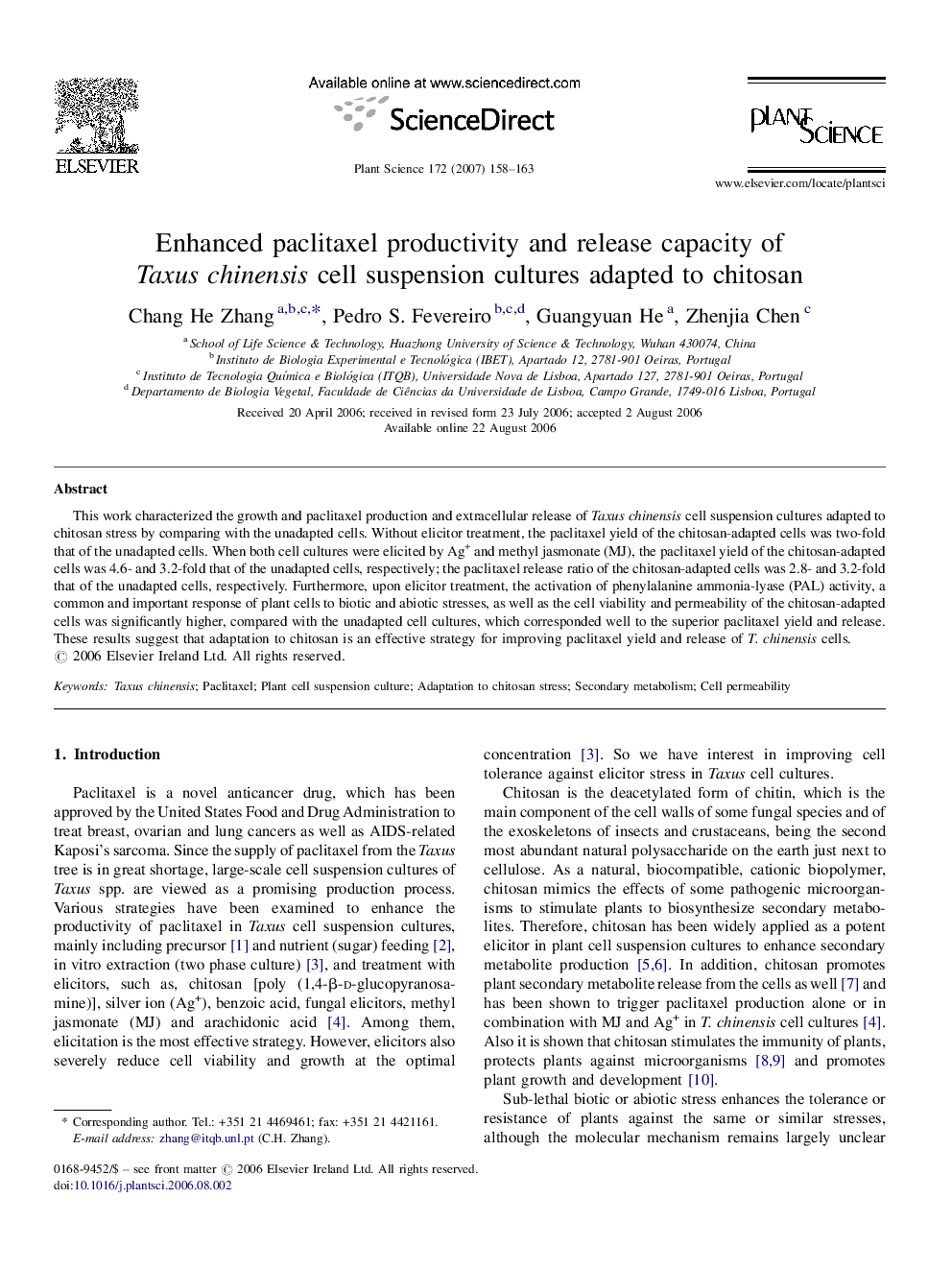| Article ID | Journal | Published Year | Pages | File Type |
|---|---|---|---|---|
| 2018207 | Plant Science | 2007 | 6 Pages |
This work characterized the growth and paclitaxel production and extracellular release of Taxus chinensis cell suspension cultures adapted to chitosan stress by comparing with the unadapted cells. Without elicitor treatment, the paclitaxel yield of the chitosan-adapted cells was two-fold that of the unadapted cells. When both cell cultures were elicited by Ag+ and methyl jasmonate (MJ), the paclitaxel yield of the chitosan-adapted cells was 4.6- and 3.2-fold that of the unadapted cells, respectively; the paclitaxel release ratio of the chitosan-adapted cells was 2.8- and 3.2-fold that of the unadapted cells, respectively. Furthermore, upon elicitor treatment, the activation of phenylalanine ammonia-lyase (PAL) activity, a common and important response of plant cells to biotic and abiotic stresses, as well as the cell viability and permeability of the chitosan-adapted cells was significantly higher, compared with the unadapted cell cultures, which corresponded well to the superior paclitaxel yield and release. These results suggest that adaptation to chitosan is an effective strategy for improving paclitaxel yield and release of T. chinensis cells.
